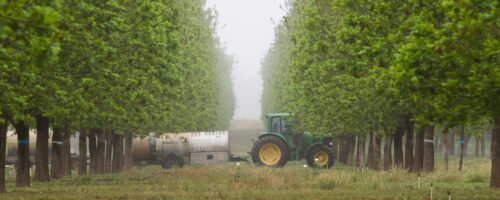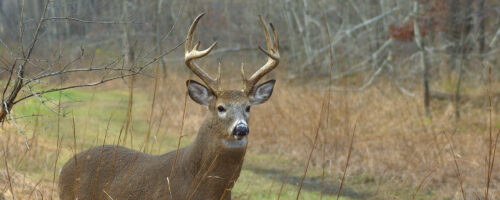Depth, watershed considerations guide pond design
Two characteristics that should be considered before constructing a new pond are depth and watershed.
Before constructing a new pond that is filled by rain runoff, the most important considerations are soil properties at the pond site, watershed acreage and characteristics (watershed is the area that captures or collects rain runoff for a pond), goals for the pond, and water depth. This article focuses on two considerations: depth and watershed.
Depth
Pond goals such as sport fishing and year-round livestock water supply require adequate pond depth to supply dependable water during drought. Adequate depth varies depending on where a pond is located, its surface area to water volume relationship, desired life of the pond, how well its water volume is matched to its watershed size, seepage and, to a lesser extent, some other issues. Water depth that provides dependable water during a single year can be as shallow as 6 feet in southeast Oklahoma or as deep as 12 feet in extreme western Oklahoma. However, additional depth is needed to provide dependable water during multiyear drought conditions. In south-central Oklahoma, a sport fishing or year-round livestock water supply pond should be deeper than 8 feet to provide dependable water. Over the last 35 years, all ponds on Noble Research Institute properties in Carter and Love counties, Oklahoma, that were filled by rainfall runoff and were shallower than 7 feet deep did not maintain enough water during some droughts to provide year-round livestock water or support sport fisheries without restocking, and they dried up at least once during the 35-year period.
A pond with a large surface area relative to its water volume tends to evaporate more water and become low or dry up more easily. It is good idea to construct a relatively deep spot in the basin of such a pond to ensure a dependable water supply. Adequate depth in well-designed ponds can be inadequate in ponds with small watersheds or seepage issues.
All ponds become shallower after construction. The rate that a pond silts in depends on watershed characteristics and inflow volume. Ponds with tilled or eroding watersheds usually silt in faster than ponds with well-vegetated watersheds. We monitored siltation rates of 40 ponds in Carter County, Oklahoma, for six to 22 years (36 ponds were monitored for a minimum of 17 years). Average siltation rate was 0.1 foot per year but ranged from 0.02 to 0.37 foot per year. If a manager wants a pond to last many years, adequate depth must be created during construction to allow for siltation over time.
Watershed
A pond that is filled by rainfall runoff should be designed so its water volume is matched appropriately to its watershed area. A pond with water volume too large for its watershed tends to have low water levels during normal and below-average rainfall periods. Alternatively, a pond with a relatively small volume relative to its watershed requires larger and more expensive dams and spillways, or it tends to have erosion and stability problems with these structures due to excessive overflows. Spillway sizes must be matched to watershed sizes. Unfortunately, many pond owners learn this lesson the hard way during periods with abundant rainfall. Also, ponds with small volumes relative to their watersheds tend to lose excessive portions of their fisheries during frequent and large volume overflows.
The appropriate pond volume for a watershed acreage depends primarily on where a pond is located and secondarily on watershed soil, vegetation and slope characteristics. A pond in extreme eastern Oklahoma might need only 2 acres of watershed per acre-foot of pond volume, whereas a pond in the extreme western Oklahoma Panhandle might need 75 acres of watershed per acre-foot of pond volume. Ponds close to Ardmore, Oklahoma, generally need 8 to 16 acres of watershed per acre-foot of pond volume. Ponds with watersheds having sandy soils, abundant vegetative cover and slight slopes need larger watersheds than ponds with watersheds having clay soils, minimal vegetative cover and steep slopes. More information about matching pond volume, spillways and dams to watershed characteristics is available in the USDA Natural Resources Conservation Service Agricultural Handbook Number 590.



Comment